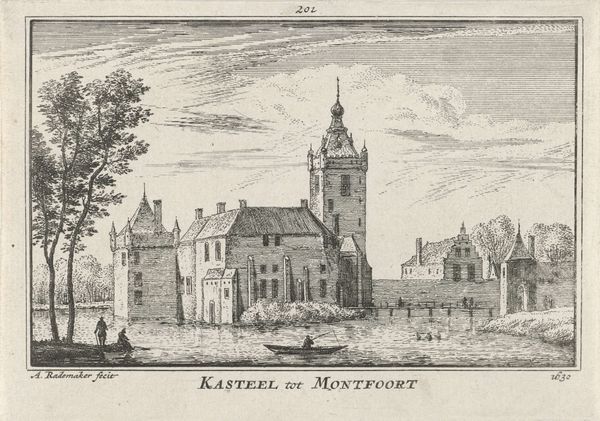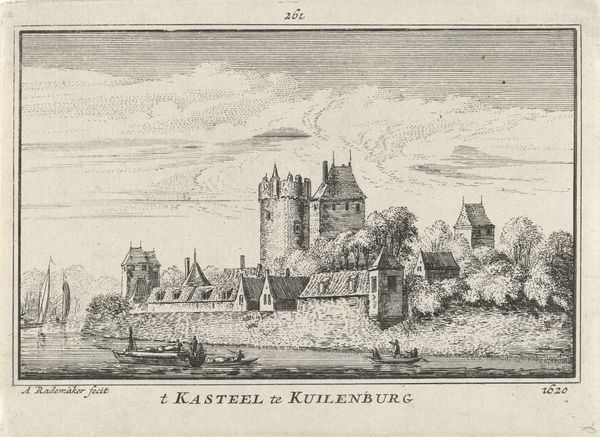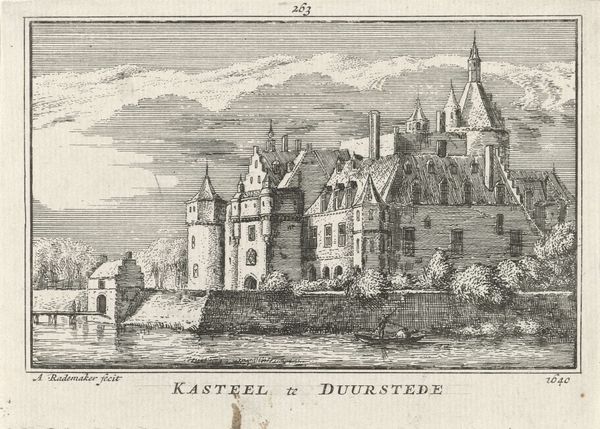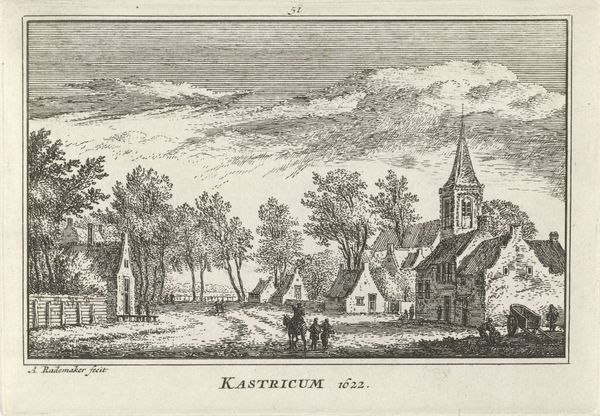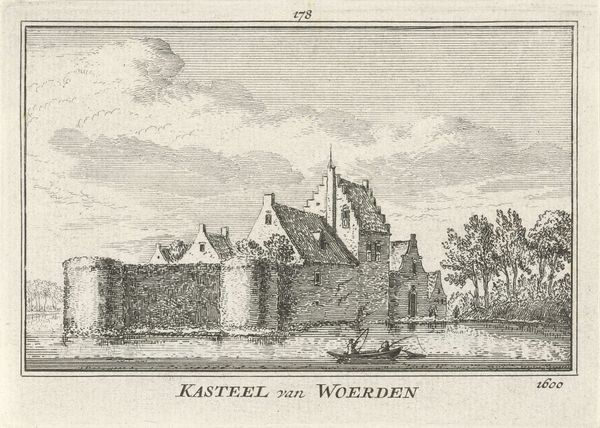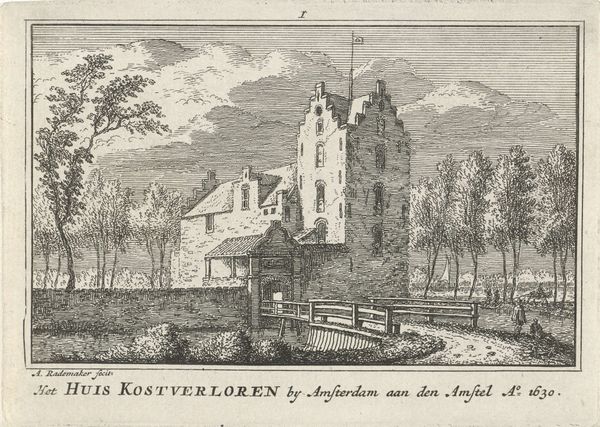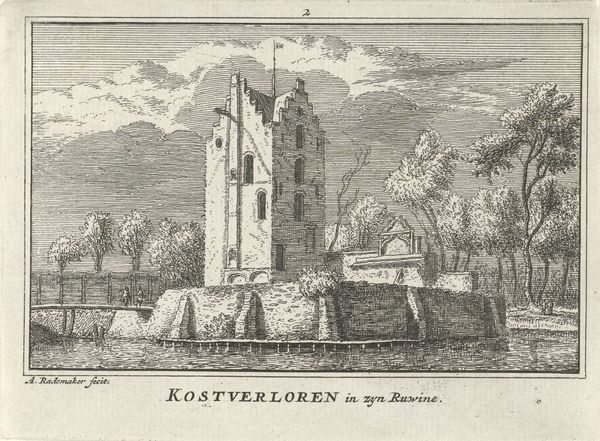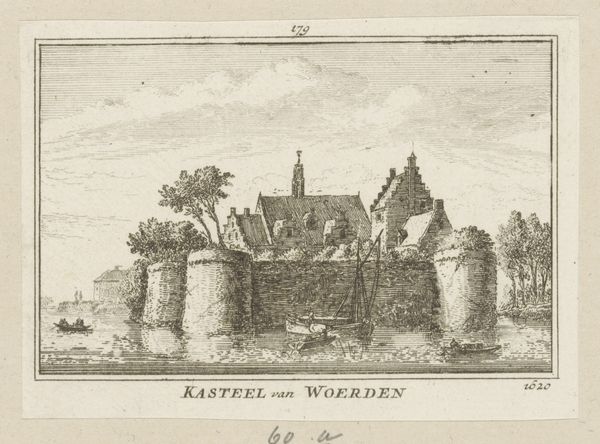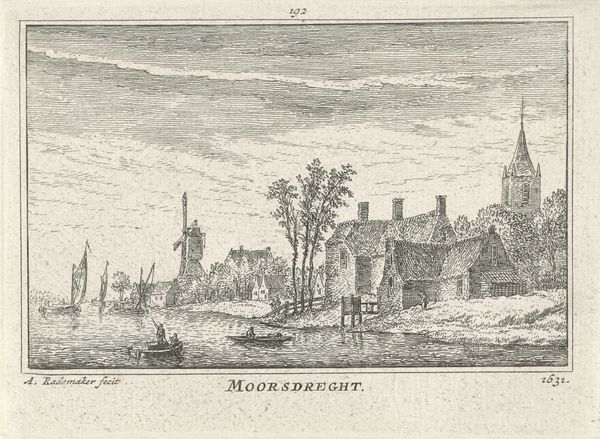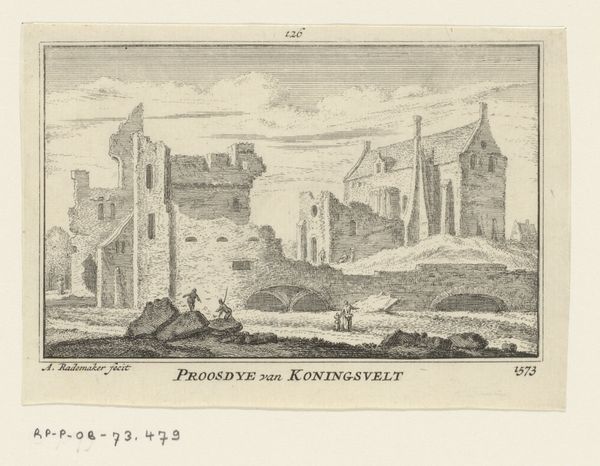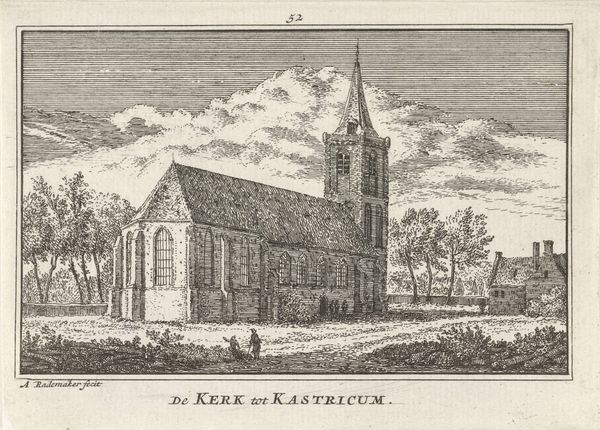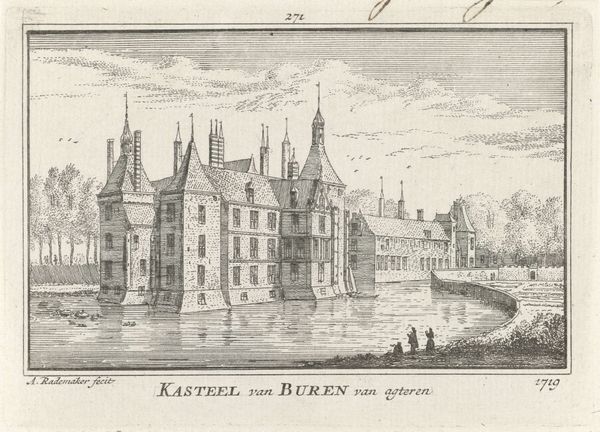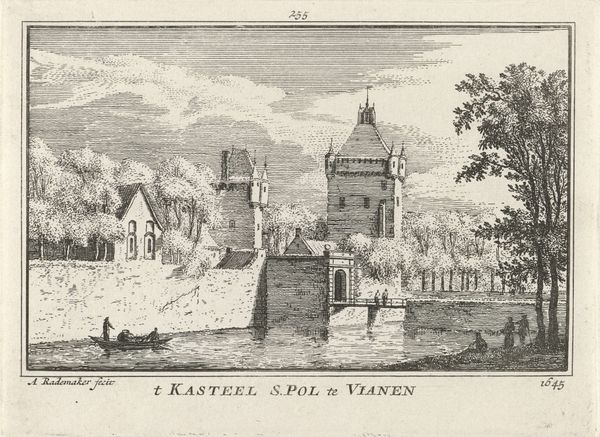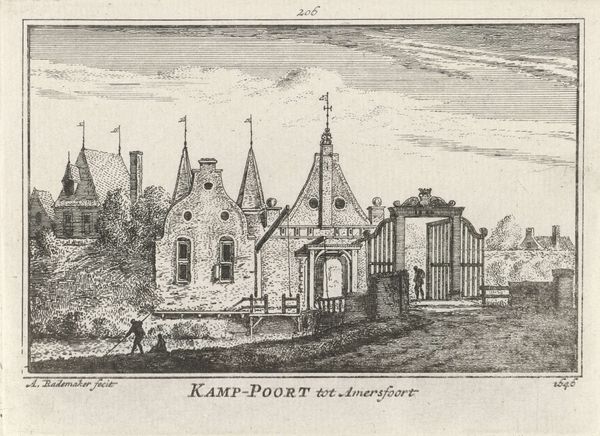
print, etching, engraving, architecture
#
dutch-golden-age
# print
#
etching
#
old engraving style
#
landscape
#
engraving
#
architecture
Dimensions: height 80 mm, width 115 mm
Copyright: Rijks Museum: Open Domain
Curator: Here we have Abraham Rademaker's "Zicht op Kasteel Montfoort," dating from around 1727 to 1733. It's an engraving, a print that captures a landscape with prominent architecture. Editor: Instantly, it feels like peering into a faded dream. That silvery grey monochrome, those tiny figures rowing...it whispers stories of another era, a wistful bygone time. The detail is astonishing! Curator: Indeed. The engraving technique allows for a remarkable degree of detail, if you look closely at the articulation of the stone, water and sky; it conveys a sense of depth using hatching and cross-hatching techniques, manipulating the viewer's perceptions via careful composition. Notice the structure, and the placement of light and dark—chiaroscuro is cleverly used to define forms and spaces. Editor: It's almost cinematic, wouldn't you say? A sense of theatre... And that castle itself, emerging from the water! Makes you wonder about the narratives that it would conceal… it could easily inspire Gothic tales of damp hallways, clandestine rendezvous, secret corridors and maybe ghosts in shining armor! Curator: The appeal you mention lies perhaps within Rademaker's technical expertise. His manipulation of line creates texture, volume, and atmosphere, it allows for the representation of varying materials with precision, offering an insightful record of the architectural landscape. Editor: It really sparks my imagination. Those clouds – you can almost feel the weight of a damp, low-hanging sky. Rademaker creates an almost palpable atmosphere. The little boat with figures approaching the castle adds an element of suspense, like they’re characters in a half-told story. Curator: A compelling narrative is woven via Rademaker’s keen observations, captured in linear marks forming complex patterns which present to us not only a physical depiction but also intellectual documentation for analysis and admiration within art history. Editor: It invites you to linger and to speculate on those who once inhabited that imposing castle and the stories within. So melancholic and beautifully executed – what a glimpse of life hundreds of years distant! Curator: Precisely, this demonstrates art's capability to exist not just as static form, but rather active catalyst engaging discourse even now. Editor: Beautifully stated. I must admit, analyzing this landscape today feels a little bit like archaeology itself... A gentle unearthing of sentiments across the eras.
Comments
No comments
Be the first to comment and join the conversation on the ultimate creative platform.
